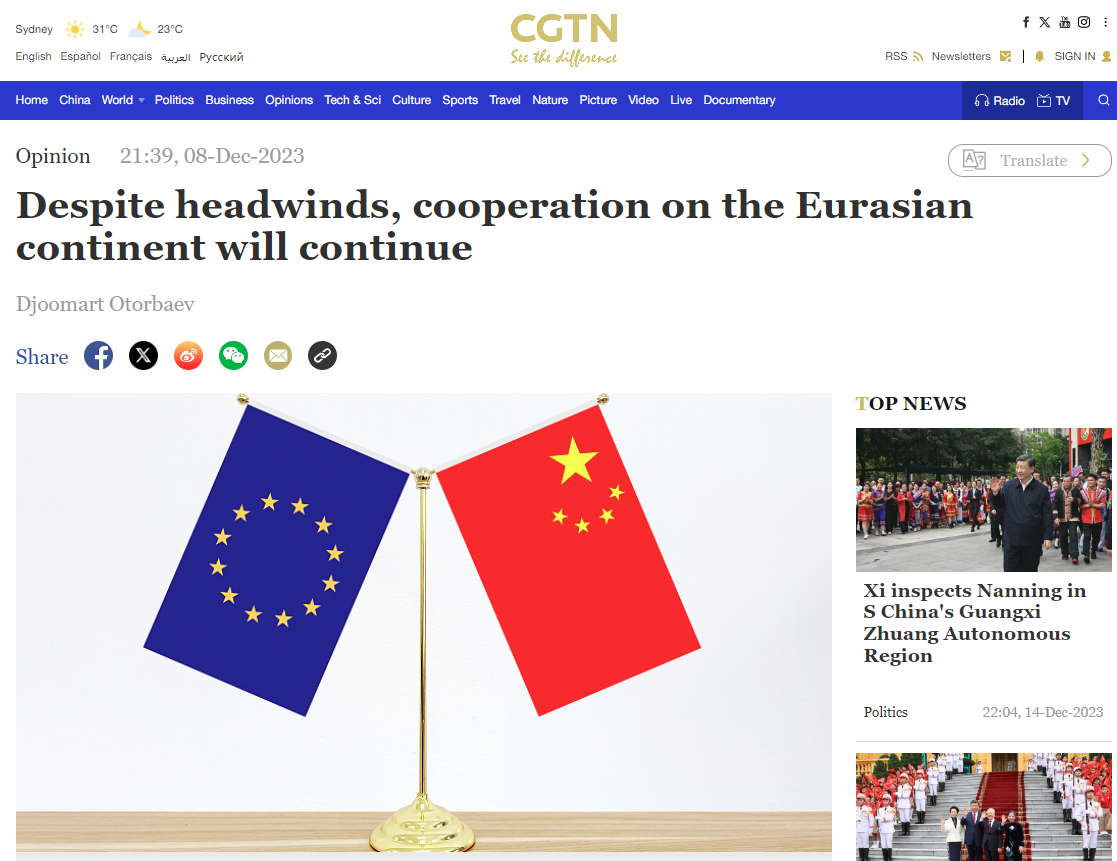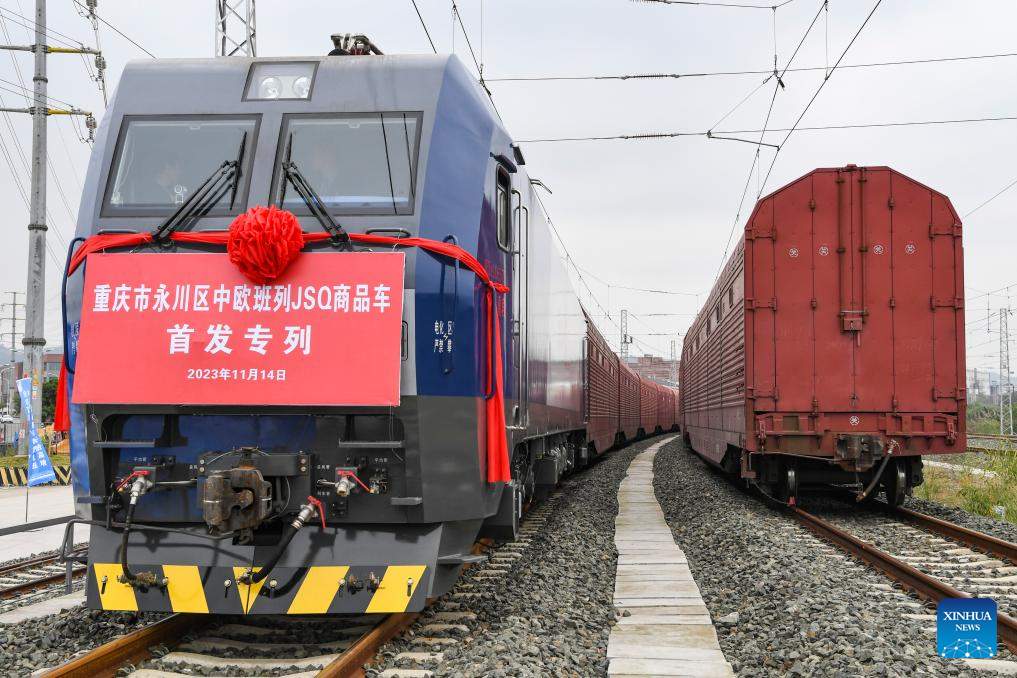LATEST INSIGHTS
Your Present Location: LATEST INSIGHTSDjoomart Otorbaev: Despite headwinds, cooperation on the Eurasian continent will continue
Source: CGTN Published: 2023-12-08

The first in-person meeting of its kind between the world's two major forces and markets after the COVID-19 pandemic – the 24th China-EU Summit – was held in the Chinese capital of Beijing on December 7.
At the summit, the two sides had an in-depth and candid exchange of views on strategic issues concerning China-EU relations, China-EU dialogue and cooperation, and their respective concerns about the EU and the world, and displayed the impact and significance of China-EU relations worldwide.
One of the main discussion topics is the growing bilateral trade deficit and concerns about increasing dependence on imports from China, which is why the EU has labeled China as "an economic competitor and a systemic rival." But how asymmetrical is trade between China and the EU, and how justified are European officials' claims to Beijing about their "discriminatory practices?"
Over the past 15 years, mutual trade in goods between China and the EU has grown significantly, reaching a record high of 857 billion euros ($917 billion) in 2022, which is up 23 percent from the previous year.
But it turns out that European exports of goods to China have been growing faster than their imports from China over this period. From 2007 to 2022, European exports of goods to China grew from 71 billion euros ($76.61 billion) to 230 billion euros ($248.18 billion), an increase of 3.24 times. In contrast, Chinese exports of goods to Europe over the same period increased from 231 billion euros ($249.24 billion) to 627 billion euros ($676.51 billion), which is an increase of 2.71 times.

A JSQ freight train (L) preparing to depart at Langantan Station in Yongchuan District of southwest China's Chongqing, China, November 14, 2023. /Xinhua
It is the imbalance in mutual trade that causes discomfort among European politicians. In the years from 2018 to 2022, the EU's bilateral trade deficit with China increased from 154.7 billion euros ($166.89 billion) to 396 billion euros ($427.2 billion). However, it's worth noting that the deficit has been gradually decreasing in percentage terms. It's expected that the trade deficit may continue to fall this year. A big contributor to reducing the deficit was a significant increase in sales by European automakers to China.
Economic relations between partners are not limited to cross-border trade, and foreign direct investment (FDI) plays a significant role. It's important to note that foreign trade statistics do not include goods and services produced by foreign or joint ventures operating in partner countries and supplied to local markets. Hence, FDI is a crucial aspect to consider when analyzing economic relations between the EU and China.
In the post-COVID period, the Chinese government introduced several major reforms to make it easier for foreign-owned businesses to operate. In August this year, China's State Council issued a statement outlining its guidelines regarding further optimizing the foreign investment environment and intensifying efforts to attract foreign investments. For instance, several provinces in China have created additional structures that offer tax breaks, exemption from import duties on raw materials, relaxation of labor and environmental standards, and other incentives to attract foreign capital.
According to China's Ministry of Commerce, EU investment in China grew by a whopping 92.2 percent year on year in 2022. German investment in China reached 10 billion euros ($10.8 billion) in the first half of 2022, a half-year record and up from 6.2 billion euros ($6.69 billion) in the same period in 2021.
It's worth noting that the EU showed realism by acknowledging that Brussels and Beijing "will continue to be important trading and economic partners" even as the bloc reduces "critical dependencies and vulnerabilities." The statement explicitly states that the EU does not intend to "turn inward."
The takeaway from this analysis is that European officials will have limited ability to apply additional pressure on Beijing on economic issues. The economies of the two power centers in the Eurasian continent are very closely intertwined. Moreover, the growth of European manufacturers' exports to China over the past 15 years exceeds the growth of imports from China, and FDI by European companies into China is increasing. Therefore, it's unlikely that high-ranking officials will begin the process of sawing off the branch on which they are sitting, especially in the current brutal economic realities. It seems that there is no alternative to the process of globalization on the Eurasian continent.
Key Words: Djoomart Otorbaev, Cooperation, Eurasia























































































 京公网安备 11010802037854号
京公网安备 11010802037854号





